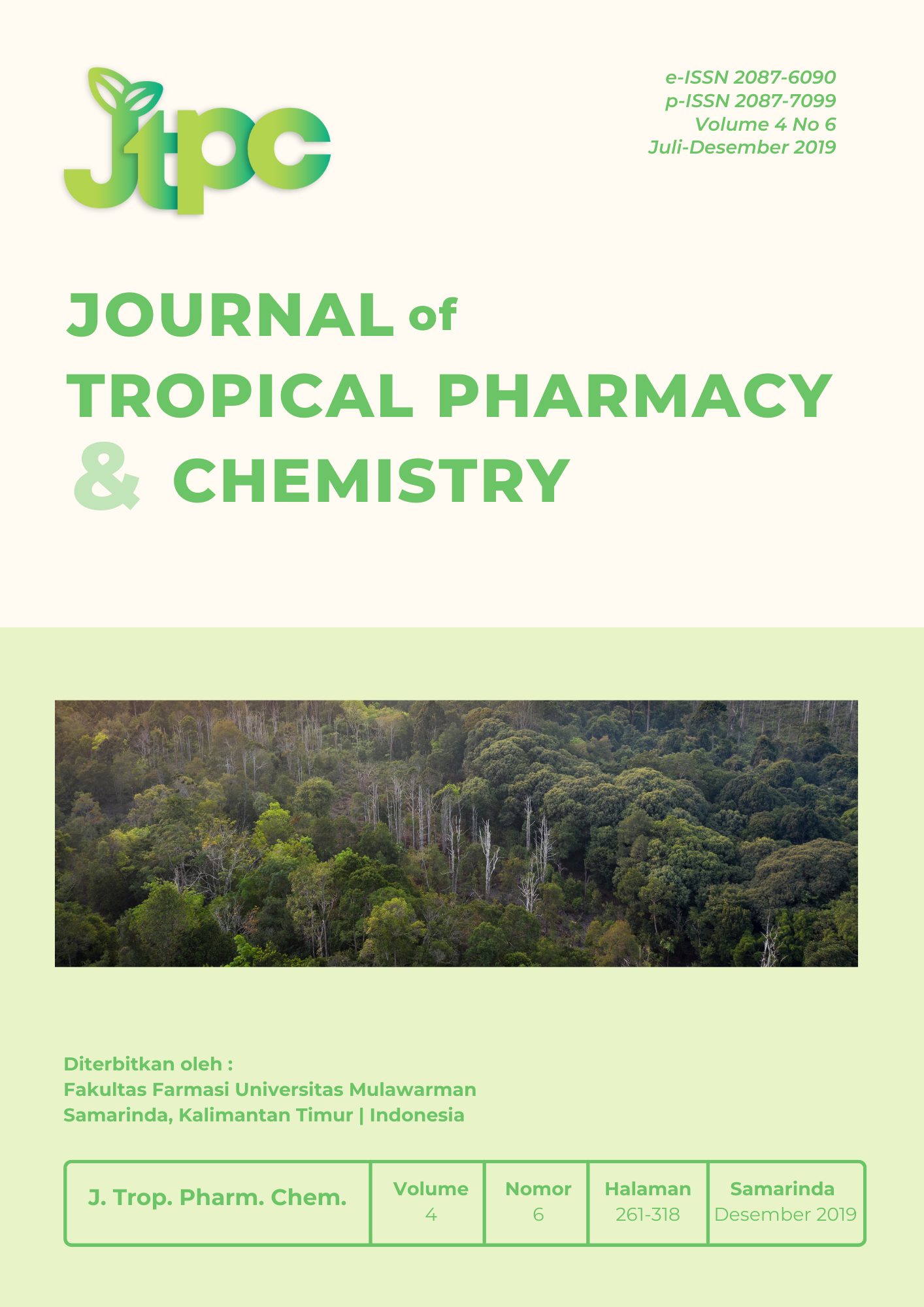Review: Study the Role of China Acupuncture and "GI" Acupuncture as an Alternative and Complementary Therapy in the Treatment
DOI:
https://doi.org/10.30872/j.trop.pharm.chem.v4i6.196Keywords:
Acupuncture, Stress, complementaryAbstract
This article discusses the scientific literature review on Chinese acupuncture and "GI" acupuncture as an attempt therapy many cases, besides that specifically studied the effectiveness of traditional acupuncture china to stress with "GI" acupuncture. Chinese acupuncture is an acupuncture method that was developed in China since ± 2000 years ago, while "GI" acupuncture is a method of acupuncture that was developed at the Institute Technology Bandung by acupuncturists Gunawan Ismail (Alm) is slightly different from the traditional Chinese acupuncture, where acupuncture "GI "based on a 7 acupuncture points on the body for ase points determined based of Java massage. Each method studied acupuncture and its role as a therapeutic efforts on a variety of cases, and the results of the study showed some success in handling cases of diseases such as fibromyalgia, stroke and stress. The role of acupuncture GI who want to see here is give the same effectiveness with traditional acupuncture originated from China or even better.
Downloads
References
1. Guan YJ. Xiang J.J. and Jin L. Contemporary Medical Acupuncture - A System Approach. Beijing : Higher Education Press 277-278 ; 2006
2. Zhang XR. Acupuncture : Kajian and Analysis of Reports on Controlled Clinical Trials. Geneva : World Health Organisation 5 ; 2002
3. Ismail G. Sehat Tanpa Obat dengan Tusuk Jarum Ala Indonesia. Jakarta : Grasindo 40-82 ; 2009
4. Haryono DC. Soemardji AA. Dan Fanty F. Peranan Terapi Akupunktur “GI” Pada Penderita Stroke., JKM : ISSN -1411-9641 ,142, Vol.10. 2011
5. Saputra K. Akupunktur Dalam Pendekatan Ilmu Kedokteran. Surabaya : Airlangga University Press ; 2000
6. Calehr H. Pedoman Akupunktur Medis Jilid 1 Pengetahuan Dasar. Jakarta: Gramedia Pustaka Utama 140 ; 1986
7. Erlinda O. Peran Akupunktur “GI” Dalam Penekanan Gejala Fibromyalgia, (skripsi).Bandung : Sekolah Farmasi-ITB 8-9 ; 2011
8. Zhang XR. Guidelines On Basic Training And Safety In Acupuncture. Geneva : World Health Organisation 19-20 ; 2002
9. Santrock JW. Aldocense (perkembangan remaja). Translation By Soejarwo. Jakarta : Erlangga ; 2003
10. Atkinson R.L dkk. Hilgrands Introduction to Psychology. Ed 13th. Ney York : Harcourt College Publisher ; 2003
11. Sarafino E. Health psychology Biopsychosocial interaction. Ed 5th. USA : John Wiley & Sons.Inc ; 2006
12. Bryce CP. Insights into the Concept of Stres. Washington D.C : WHO ; 2001
13. Eshkevari., L. (2011): Acupunkture Prevents ChronicStres Induced Increasesin Neuropeptide Y in Rat. Washington. Georgetown University Medical Centre. Diakses melalui. http://ebm.rsmjournals.com
14. Mutiara APA. Peran Akupunktur “GI” Dalam Terapi Hipertensi, (skripsi).Bandung: Sekolah Farmasi-ITB ; 2011
15. Agustina R, Soemardji A (2016). THE EFFECTIVENESS of “ GI ACUPUNCTURE” to The STRESS TREATMENT In PATIENTS at SUKAMENAK ACUPUNTURE CLINICAL and UPT HEALTH SERVICES BUMI MEDIKA GANESA ITB.Jurnal Sains dan Kesehatan, Vol 1. Issue. 5




